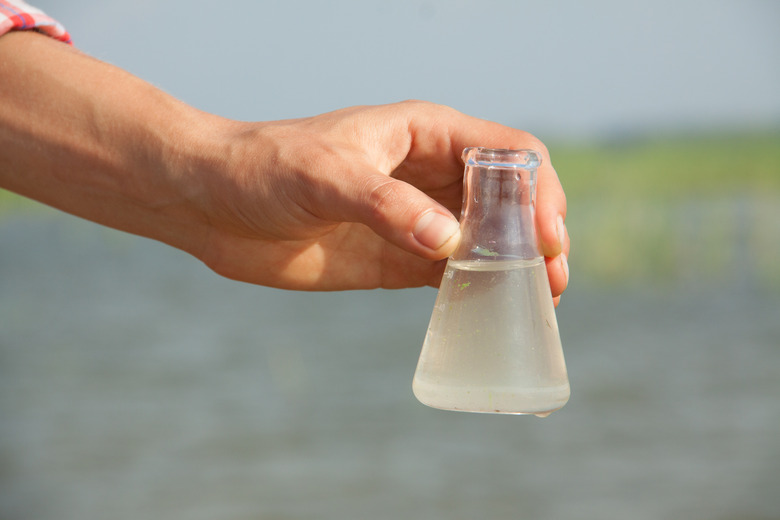Food Chains And How They Are Affected By Water Pollution
The effects of many forms of water pollution multiply as they move up the food chain. This gives us no choice but to be concerned about them. After all, we are at the top of the food chain. A pollutant's damage to the food chain depends on various factors. When considering the effects of water pollutants on food chains we must examine specific pollutants including how they enter the water, how they move through the food chain, and how we deal with pollutants.
Bioaccumulation
Bioaccumulation
Bioaccumulation occurs when an animal eats another animal or organism and retains the pollutants that were inside its meal. Biologists often find higher levels of toxins in bigger fish that have long life spans, because those fish eat many smaller ones and retain the metals they contained. This results in high levels of toxins, such as mercury, in the bigger fish. Swordfish and king mackerel are big fish that display particularly high mercury levels, according to the U.S. Environmental Protection Agency. Mercury causes kidney damage in mammals and is a carcinogen. When birds and mammals then eat the polluted aquatic life, the contaminants spread throughout the food chain.
Persistent Water Pollutants
Persistent Water Pollutants
Persistent pollutants remain active in water for years. They tend to be the ones that bioaccumulate the most. These pollutants include certain pesticides, heavy metals and pharmaceuticals. The primary toxic heavy metals in our water are lead, arsenic and mercury. Pharmaceuticals such as steroids and hormones, in addition to pesticides, disrupt the endocrine systems of wildlife. The feminization of amphibians, neurological problems and cancer all result from endocrine-disrupting pollutants. A 2011 World Health Organization report points out that it is impossible for even the most advanced drinking water treatment methods to entirely remove pharmaceuticals.
Eutrophication
Eutrophication
Eutrophication is an overabundance of nutrients in a water body. It leads to fish kills, due to a lack of oxygen, which have immediate and far-reaching implications on the food chain. Fish kills occur in water bodies from the size of streams to the Pacific Ocean. The Gulf of Mexico dead zone is an oceanic area that is overloaded with nutrients. The primary source of nutrient overload is from agricultural runoff traveling to the ocean via large rivers. According to a MTT Agrifood Research Finland study, eutrophication affects 57 percent of Finland's domestic food chain contribution to its national economy.
Limiting Effects on the Food Chain
Limiting Effects on the Food Chain
Limiting water pollutants is crucial because they find their way into our entire food supply, from meats and dairy products, to fruits and vegetables. We can limit the effects of water pollutants by taking precautions. Heavy metals such as arsenic are naturally occurring. However, when humans are exposed to high levels, it causes health problems. We are exposed to high levels of arsenic through foods such as rice, which is grown in water-flooded conditions. Health problems include skin damage, problems with the circulatory system, and an increased risk of cancer. Proper mining procedures and waste disposal can limit arsenic from getting into the water supply.
Cite This Article
MLA
Shepard, Don. "Food Chains And How They Are Affected By Water Pollution" sciencing.com, https://www.sciencing.com/food-chains-affected-water-pollution-7712/. 13 March 2018.
APA
Shepard, Don. (2018, March 13). Food Chains And How They Are Affected By Water Pollution. sciencing.com. Retrieved from https://www.sciencing.com/food-chains-affected-water-pollution-7712/
Chicago
Shepard, Don. Food Chains And How They Are Affected By Water Pollution last modified March 24, 2022. https://www.sciencing.com/food-chains-affected-water-pollution-7712/
